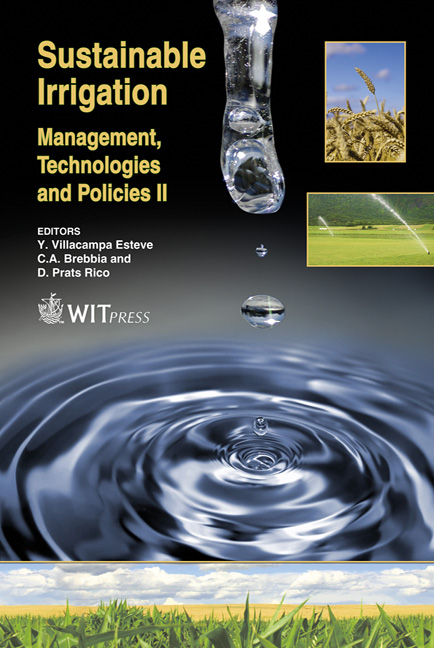A Framework For Evaluating The Consumption Patterns And Environmental Impacts Of Irrigation Methods: A Case Study From South-Eastern Australia
Price
Free (open access)
Transaction
Volume
112
Pages
10
Page Range
245 - 254
Published
2008
Size
325 kb
Paper DOI
10.2495/SI080241
Copyright
WIT Press
Author(s)
T. M. Jackson, S. Khan & M. M. Hafeez
Abstract
Irrigated agriculture is an essential tool for increasing food production to meet global demand. However, along with benefits of high yields there are environmental impacts that must be considered. The tendency in Australia to evaluate irrigation systems in terms of water use efficiency only is problematic, and the criteria used to assess the sustainability of agricultural systems should reflect broader issues. A representative broad acre farm in the south east of Australia was used as a case study to explore the different resource consumption patterns and environmental impacts of flood, centre pivot and sub-surface drip irrigation methods. The energy and water consumption of each method was determined, along with greenhouse gas emissions and groundwater impacts, and the systems then ranked in order of highest to lowest resource use efficiency and environmental impact. It was found that when an irrigated system was evaluated by more than just water use efficiency, its ranking often changed. This method also allowed for the identification of areas where improvements could be made. Assessing irrigation methods and their appropriate selection for a given situation can aid in efficient and environmentally sound production systems at the local and global scale. Keywords: energy, water, environmental impacts, indicators.
Keywords
energy, water, environmental impacts, indicators.





